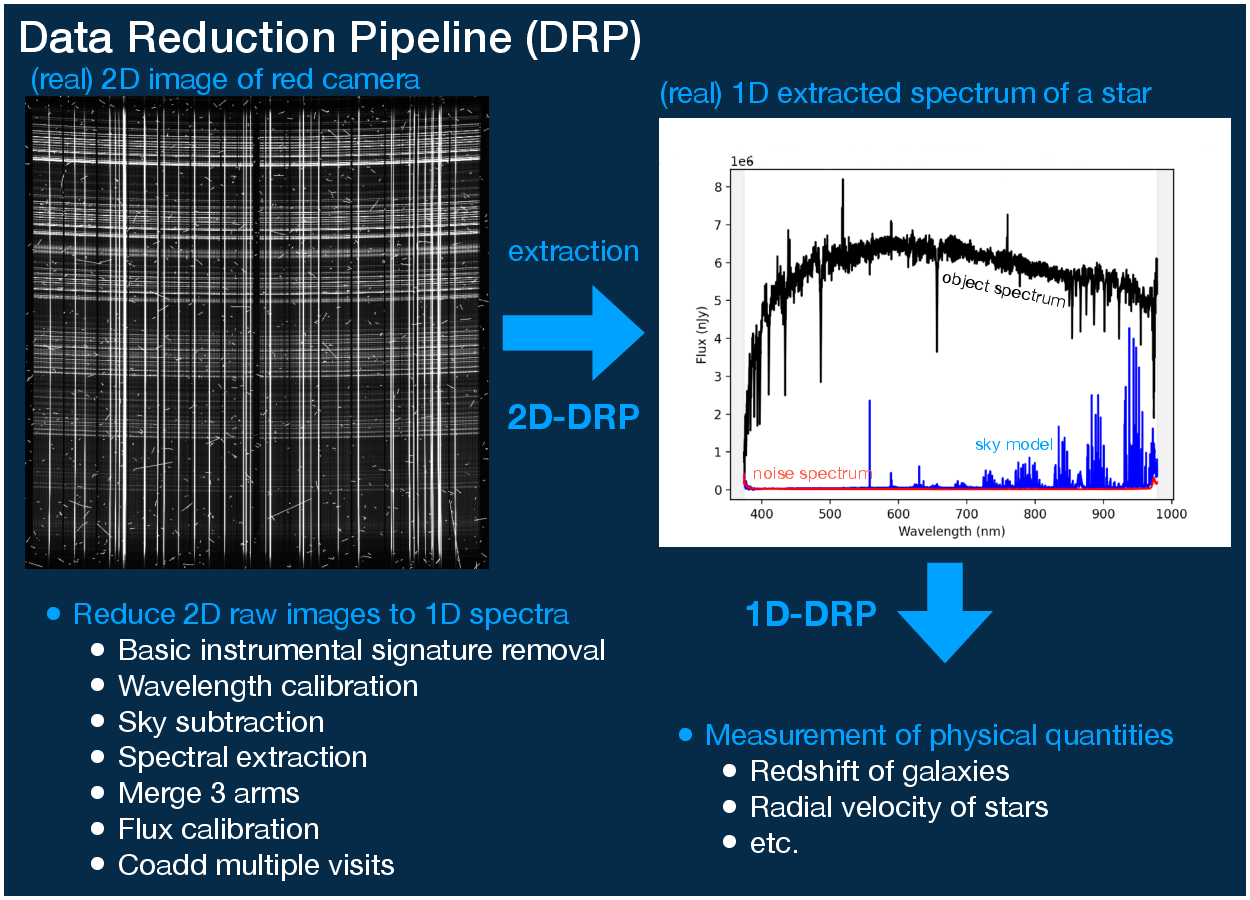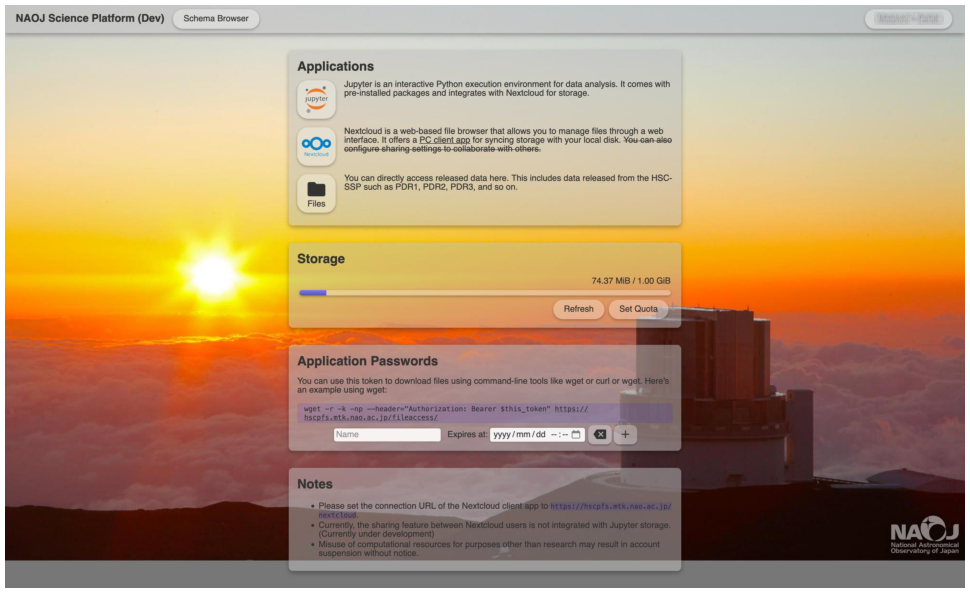Data access and reduction
PFS DRP Tutorial is now avaiable
Please refer to PFS DRP Tutorial web page for more details on the data reduction pipeline.
Queue progress
Observatory is aiming to make the web page of Queue progress available to each PI during the S25B period. Once it is ready, the observatory will contact about it each PI of Queue mode programs.
Progress of each queue program will be provided to PIs in the dedicated webpages. PIs can access the information there, for example, as follows,
- Final quality assessment results
- Observation starting time in UTC
- Cumulative effective exposure time
- Completion rate in percent
- Comments from night staff for each observation
- etc.
The information on the progress pages will be updated after the final quality assessment of observed data performed in the next daytime of observations.

Sharing observation log for Classical mode
Basically, observation logs for Classical mode observations will be shared with PIs by SA in CSV format in the next daytime.
Data access
After the observation, the observatory will, in principle, provide the processed data via PFS Science Platform. The raw data are accessible on STARS but will be filtered target information so that each PI/CoI can see it for only their targets.
Data reduction pipeline
PFS Data Reduction Pipeline (DRP) Tutorial
Please refer to PFS DRP Tutorial for more details on the data reduction pipeline of PFS (Mar 20, 2025).

PFS science data is delivered to users after reduced and processed with the Data Reduction Pipelines (DRPs). There are two DRP with PFS. One is 2D-DRP which reduces 2D raw images taken by PFS cameras to 1D spectra, and the other is 1D-DRP which measures physical quantities from the 1D extracted spectra by 2D-DRP.
2D-DRP
- Basic instrumental signature removal
- Wavelength calibration
- Sky subtraction
- Spectrum extraction
- Merge spectra from 3 arms
- Flux Calibration
- Coadd multiple exposures
1D-DRP
- Measurement of redshifts of galaxies
- Measurement of radial velocities of starts
- etc.
Calibrated 1D spectra from 2D-DRP and physical quantities from 1D-DRP will be delivered to the user through the PFS Science Platform (see below). Raw camera images are also accessible via STARS for queue/classical/ToO users (not community filler).
We will launch the PFS data help desk to support the user with PFS pipeline processing. Please contact for further information.
Data Processing Agreement
IMPORTANT: Do NOT manually process the data of the fibers of other proposal(s)!
Because the observatory will observe targets from multiple programs in the same exposure, the raw data include not just an investigator's targets but targets from other programs as well. The pipeline processing yields spectra of targets of each investigator's only, but it is in principle possible to manually process fibers used for other programs without using the pipeline. Do not do such manual processing! If you submit a PFS proposal, we consider that you have agreed not to manually process fibers for other programs. If the observatory observe violation of the agreement, the observatory will not accept future proposals from the investigator(s).
PFS science platform
The processed data for all open-use programs will be delivered to the user through PFS Science Platform (SP) after each observing run or each semester. The exact frequency is TBD at this point. Only PIs/coIs can access their data.

In addition to PFS data, PFS SP also provides HSC PDR3 so that the user can jointly analyze the imaging and spectroscopic data there. Jupyter Notebook is the main environment. We may be able to provide ssh and X11 support. We will inform the PIs of accepted programs of PFS SP details in due course.
The PFS data help desk will also take care of the PFS SP user. Detailed will be informed to the PIs of accepted programs.